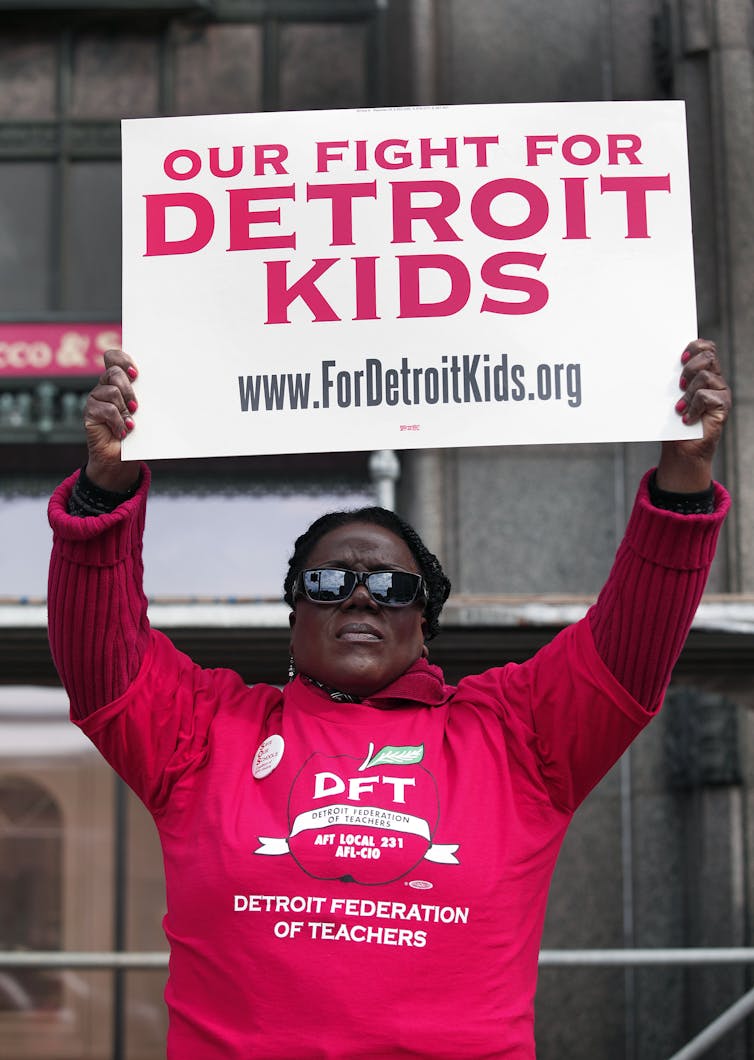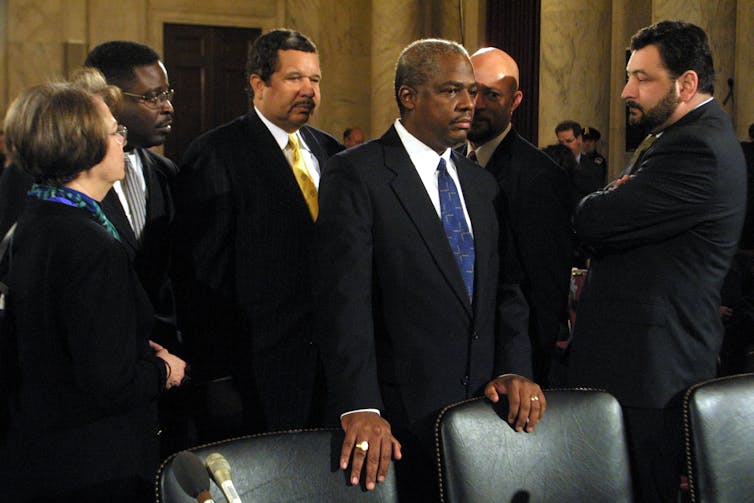Source: The Conversation – USA – By Jeremy Singer, Assistant Professor of Education, Wayne State University

Thousands of K-12 students in Detroit consistently miss days of school.
Chronic absenteeism is defined as missing at least 10% of school days – or 18 in a 180-day academic year. In Detroit, chronic absenteeism rose during the COVID-19 pandemic and remains a persistent challenge.
To encourage attendance, the Detroit Public Schools Community District is getting creative. This past year, Michigan’s largest school district awarded US$200 gift cards to nearly 5,000 high schoolers for attending all their classes during a two-week period, and Superintendent Nikolai Vitti also floated the idea of providing bikes to help students get to class. Some district students lack access to reliable transportation.
To understand the consequences of kids regularly missing school, The Conversation U.S. spoke with Sarah Lenhoff, associate professor of education at Wayne State University and director of the Detroit Partnership for Education Equity & Research, an education-focused research collaborative, and Jeremy Singer, an assistant professor of education at Wayne State University. Lenhoff and Singer wrote a book published in March about the socioeconomic drivers of chronic absenteeism in K-12 schools and how policymakers and communities, not just educators, can help.
Is chronic absenteeism the same as truancy?
No. Truancy is how schools have thought about and dealt with student attendance problems since the early days of public education in the United States in the 19th century and is still defined in state law across the country. It focuses on “unexcused” absences and compliance with mandatory school attendance laws. By contrast, chronic absenteeism includes any absence – whether “excused” or “unexcused” – because each absence can be consequential for student learning and development.
Chronic absenteeism is usually defined as missing 10% or more school days. The 10% threshold is somewhat arbitrary, since researchers know that the consequences of missing school accumulate with each day missed. But the specific definition of chronic absenteeism has been solidified in research and by policymakers. Most states now include a measure of chronic absenteeism in their education accountability systems.
How big of a problem is chronic absenteeism in Detroit’s K-12 public schools?
Detroit has among the highest chronic absenteeism rates in the country: more than 50% in recent school years. Prior to the pandemic, the average rate of chronic absenteeism nationwide was about 15%, and it was around 24% in 2024.
In one of our prior studies, we found Detroit’s chronic absenteeism rate was much higher than other major cities – even others with high absenteeism rates such as Milwaukee or Philadelphia.
This is related to the depth of social and economic inequalities that Detroit families face. Compared to other major cities, Detroit has higher rates of poverty, unemployment and crime. It has worse public health conditions. And even its winters are some of the coldest of major U.S. cities. All of these factors make it harder for kids to attend school.
Rates of chronic absenteeism spiked in Detroit during the COVID-19 pandemic, as they did statewide. The Detroit Public Schools Community District has come close to returning to its pre-pandemic levels of absenteeism. The rates were 66% in the 2023-24 school year compared to 62% in the school year right before the pandemic began, 2018-19.
Detroit’s charter schools have struggled more to bring down their chronic absenteeism rates post-pandemic, but the numbers are lower overall – 54% in the 2023-24 school year compared to 36% in 2018-19.

Bill Pugliano/Getty Images
How does missing school affect students?
The connection between attendance and achievement is clear: Students who miss more school on average score worse on reading and math tests. As early as pre-K, being chronically absent is linked to lower levels of school readiness, both academically and behaviorally. By high school, students who miss more school tend to earn lower grades and GPAs and are less likely to graduate.
And it’s not just the absent students who are affected. When more kids in a class miss school regularly, that is associated with lower overall test scores and worse measures of skills such as executive functioning for other students in that class.
Does chronic absenteeism vary by family income or other factors?
Rates of chronic absenteeism are much higher among students from low-income families. In these cases, absenteeism is often driven by factors outside a student’s control such as unstable housing, unreliable transportation, health issues, lack of access to child care, or parents who work nontraditional hours. These challenges make it harder for students to get to school consistently, even when families are deeply committed to education.
School-based factors also influence attendance. Students are more likely to be chronically absent in schools with weaker relationships with families or a less positive school culture. However, even schools with strong practices may struggle if they serve communities facing deep socioeconomic hardship.
Ultimately, we don’t view chronic absenteeism as an issue of student motivation or family values. Rather, we see it as an issue related to the unequal conditions that shape students’ lives.
Does punishing absent kids or their parents work?
Many schools have suspended students for absences, or threatened their parents with fines or jail time. In some cases, families have lost social services due to their children’s chronic absenteeism.
Research shows these strategies are not only ineffective, they can make the problem worse.
For example, we found that when schools respond with punishment instead of support, they often alienate the very students and families who are already struggling to stay connected. Harsh responses can deepen mistrust between families and schools. When absences are treated as a personal failing caused by a lack of motivation or irresponsibility rather than symptoms of deeper challenges, students and parents may disengage further.
Instead, educators might ask: What’s getting in the way of consistent attendance, and how can we help? That shift from blame to understanding can help improve attendance.
What can policymakers, school districts and community organizations do to reduce chronic absenteeism?
Chronic absenteeism is a societal issue, not just a school problem. In other words, we need to recognize that chronic absenteeism is not a problem that schools can solve alone. While educators work to improve conditions within schools, policymakers and community leaders can take responsibility for the broader factors that influence attendance.
This could look like investing more resources and fostering collaboration across sectors such as health care, housing, transportation and social services to better support students and their families. Community organizations can play a role too, offering wraparound services such as mental health care, access to transportation, and after-school programming, all of which can support families. In the meantime, educators can focus on what they can control: strengthening communication with families, building supportive relationships and helping families connect with existing services that can remove attendance barriers.
![]()
Sarah Lenhoff receives funding from the Skillman Foundation, the Joyce Foundation, the Kresge Foundation, the William T. Grant Foundation, the American Institutes for Research, and the Urban Institute.
Jeremy Singer does not work for, consult, own shares in or receive funding from any company or organization that would benefit from this article, and has disclosed no relevant affiliations beyond their academic appointment.
– ref. More than 50% of Detroit students regularly miss class – and schools alone can’t solve the problem – https://theconversation.com/more-than-50-of-detroit-students-regularly-miss-class-and-schools-alone-cant-solve-the-problem-260773










